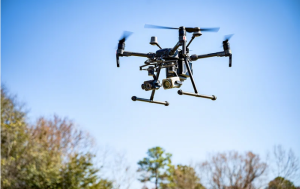
Disclaimer: Although The Freedomist is dedicated to the notion of a free and open press, there are realities that we must negotiate in our coverage. This article is one of those cases. Herein, we will be discussing very controversial subjects – more so than in our regular articles – and we must acknowledge here, that we are deliberately leaving out some information for, frankly, legal concerns. While we are steadfastly in favor of our Readers being fully prepared for any instance or circumstance, we cannot help in that if we face crushing legal action. That is the reality of the world of 2024. “YOU are your own ‘first responder’.”
In the dense jungles of Myanmar, formerly known as Burma, a revolution is unfolding. But this isn’t just a political uprising – it’s a testament to a global shift in the nature of warfare itself. The conflict in Myanmar exemplifies a broader trend: the democratization of military-grade capabilities. This phenomenon is reshaping conflicts worldwide, from the streets of Syria to the arid landscapes of North Africa.
The 3D-Printed Revolution
Factions of the Myanmar resistance movements have embraced technology in ways that would have been unimaginable just a decade ago. Anti-government rebels are using 3D printers to manufacture both components for weapons and drones, as well as complete firearms. This isn’t unique to Myanmar; across the globe, additive manufacturing is putting military-grade capabilities into the hands of non-state actors.
While the first 3D printed firearm, the “Liberator” developed by Defense Distributed of Austin, TX, in 2013 – was a crude, single-shot weapon created more as a protest against government overreach than as a practical weapons, that has now changed drastically. Internet based, open-source, online collaboration in real time allowed people around the world to rapidly develop and prototype ideas and leverage existing technologies…resulting in usable weapons that can be produced in a person’s garage, which requires minimal skill to complete.
The release of the FGC-9 in 2018-2019 radically reshaped the field, allowing the creation of a combat-capable weapon. The FGC-9, designed by Jacob Duygu, a Kurdish German gun designer (known on the internet as “JStark1809“, who died under questionable circumstances following a raid on his home by German police in 2021), is technically a “pistol caliber carbine” (or, “PCC”) that is one hundred percent 3D printed, down to the barrel and the bolt. The FGC-9 is now “combat proven” in Myanmar, with the weapons mostly being built in “guerrilla factories” across the border in Thailand, and smuggled into the fighting areas.

The fundamental difference between the FGC-9 and other “garage guns“, such as the WW2 STEN Gun or the weapons designs of Philip Luty in the 1990’s is that a person trying to build these weapons still needs at least minimal machine tooling and metal stock. In contrast, the FGC-9 needs plastic and powder-metal media, and a 3D printer capable of both running the required programs and curing the injected or sintered material, making it drastically harder to identify and control the flow of raw materials to guerrilla factories.
Likewise, if one looks around the internet hard enough, plans for heavier support weapons – everything from mortars and rocket-propelled grenades (RPGs), up to surface-to-air missiles – can be found. We will not list those particular sources here, for two reasons: first, because of legal liability, and second, because that information should be available to those needing it – such as the rebels battling a brutal dictatorship in Myanmar – because the balance of the potential good outweighs the potential for evil: “bad actors” will find a way to commit violent acts no matter what impotent, even if well-intentioned, laws prohibiting the ownership of inanimate objects are passed.
And it is not just the weapons themselves that are being printed. The manufacture of ammunition via a 3D printing application of laser sintering technology is now capable of producing not simply projectiles (i.e., bullets), but producing propellant. While still in the early stages of development, this eliminates two of the four components required to manufacture conventional ammunition, leaving only the case and ignition primer needing manufacture.
And then, we come to drones. While drone warfare is definitely not the overwhelming and decisive factor that it has been made out to be over the last decade, it does offer some significant benefits to non-governmental forces. Drones selling for less than US$100 on Amazon are capable of conducting missions ranging from aerial reconnaissance to combat target servicing, whether by dropping explosives onto a target, or by crashing into a target such as a battle tank, like a latter-day Japanese kamikaze plane. Likewise, drone parts kits are available to build much larger drones, capable of carrying much heavier payloads.

The implications heralded by the combat deployment and use of the FGC-9, on top of the repurposing of civilian drone copters for combat, are profound. State monopolies on military hardware are eroding, and with them, long-held assumptions about the balance of power in conflicts.
From Homebrewed Tanks & Artillery To Navies & Air Forces
The democratization of military capabilities isn’t limited to high-tech solutions. Since the 1980’s, pickup trucks converted into mobile fighting platforms—often dubbed “technicals”—have become ubiquitous in small-scale conflicts. These improvised fighting vehicles represent a low-tech but highly effective form of military innovation.
In Syria, this concept has been taken to new extremes. Civilian defense groups of all factions have constructed homemade armored vehicles, resembling mini-tanks, using salvaged materials and ingenious engineering. These vehicles, while not a match for modern main battle tanks (even when armed with ATGM’s), have proven surprisingly effective in urban combat scenarios. Of course, the use of these “technicals“, even if only otherwise standard pickup trucks fitted with machine guns in their beds, provides a low-tech group with a fast-moving force that can swiftly achieve spectacular results, given the right conditions.
But combat vehicles are not limited to armed pickup trucks. Returning to Syria, various forces in the mid-2010’s began building so-called “Hell Cannons“. These improvised artillery pieces fired homemade projectiles made from large propane canisters, capable of packing an impressive payload of explosives. While slow to load and not particularly accurate, these weapons are capable of inflicting significant damage on any area where their shells land. And, if fired as a battery, they can somewhat mitigate their slow reloading speed, as these weapons are almost always mounted on trailers, allowing them to be swiftly displaced and re-positioned.

Similarly, there has been a maturing of “improvised navies“. Beginning, in the modern era, with the “Tamil Tigers” extensive use of smallcraft, as well as leveraging civilian freighters as mobile sea bases, many navies – notably that of Iran – have embraced the widespread use of small, high-speed boats to both attack larger civilian vessels, but also to execute the normal range of of uses for such vessels, such as inshore patrol and policing (in small, poor nations), guerrilla supply along inshore and riverine areas, and the insertion of small teams of combat troops – much like large-state special forces – into remote areas to avoid interception. This has occasionally escalated to actual, theater-level amphibious campaigns.
In the America’s, “narco submarines” have been a continual headache for police and naval forces in several countries. While these vessels (most are not really ‘submarines‘…but some are) are not known to be used for covert insertions, they certainly can be. For the moment, however, the United States seems to still be blessed with the rule from before the 9/11 Attacks, that most of the terrorist and guerrilla groups in the world refrained from attacking targets inside the United States, as most of their funding came from ex-patriot donations from their communities of immigrants and refugees living here.

But there is also a little talked about element: “DIY Air Forces“. Increasingly, in addition to drones, well-funded insurgent groups are leveraging lightweight civilian aircraft, including autogyros. While the legions of internet flag officers around the world laughed at the Communist Chinese idea of deploying autogyros for lightweight air assault…but, after the Hamas offensive that began on October 7th of 2023, only the truly stupid still laugh, as Hamas deployed airborne raiders (against, being fair, a group of unarmed teens and 20-somethings at a rave) via paragliders, which are essentially a parachute driven by a large fan worn by the user.
Technology is advancing, and the once-fanciful shticks used as stunts in movies from the 1960’s to the 1990’s, are no longer fantasy, but hard, capable combat systems that are affordable – and acquirable – by virtually anyone.
Training, Command, and Combat Control in the Digital Age
Perhaps one of the most striking examples of democratized military capabilities comes from recent conflicts, where non-state actors have rapidly established sophisticated command and control systems using off-the-shelf technology.
In the terrorist assault on the Indian city of Mumbai in 2008, the Lashkar-e-Taiba attacker’s command group repurposed a commercial office as an improvised command center, and did so at short notice. Equipped with consumer-grade computers, open-source mapping software, and encrypted messaging apps, they coordinated dispersed, complex operations, including verifying assassination targets in real time, using Google to match pictures of victims to their names and titles via facial recognition technologies, with an efficiency that rivaled traditional military and police command structures.
More and more, new desktop software and smartphone-based apps are offering armed non-governmental actors the ability to use many of the same tools as far better funded national armed forces. These tools run the gamut, from translation apps to 3D mapping and planning tools that, hwiler perhaps not exactly ‘military spec’, are certainly ‘good enough’; in some cases, regular national forces use many of these same programs and apps, because the civilian developers simply build better tools.
But there is a deeper question: How are “rag-tag guerrillas” acquiring the training necessary to conduct these operations?
In the ‘old days’, this was mostly done via trial and error or via some group of experienced advisors, either from the national military, or from a ‘friendly’ foreign power; occasionally, desperate but well-funded groups would hire foreign mercenaries to train and lead their “popular liberation forces” in the field…But today, those blocked or otherwise unable to attend formal military training courses have an alternate: finding military training manuals online.
There are literally dozens of archival repositories scattered throughout the internet, loaded with declassified or never-classified military manuals from dozens of nations. These are frequently the current editions of manuals on a given subject. It is important to note that this is no substitute for a measured, supervised course of instruction. Leaders – especially military leaders – are not created overnight. However…in an environment where military leadership is suddenly needed, those individuals who see themselves as filling that role, can now tweeze out at least a reasonable series of academic learning.
But what about actual “field training“?
In previous decades of the late-20th Century, civilians attempting to provide themselves with military training usually resorted, to be frank, to the old children’s game pf “Army”, shouting “BANG!” at each other with rifles; in this, they were not too different from pre-World War 2 training, at least in the United States. The US military, obviously, radically reformed its training regimen after that war, to make its troops far better prepared for the next go-round.
Today, however, the increasing popularity of “combat games” such as AirSoft (or the older paintball) offer a facsimile of military training – neither as good, nor as consistent as a regular force – that is still sufficient to offer much more than a “first step”.
The Global Implications of Military-Sphere Democratization
The democratization of military capabilities is redrawing the maps of global power and conflict. Small nations and non-state actors now have access to capabilities once reserved solely to major powers and their proxies. This shift is forcing a reevaluation of traditional military doctrines and international relations:
- Asymmetric Warfare Evolved: The line between state and non-state military capabilities is blurring, making conflicts more unpredictable and potentially more protracted.
- Proliferation Challenges: Traditional arms control measures are struggling to adapt to a world where military capabilities can be ‘printed’ or improvised.
- Ethics and Legality: The ease of accessing military capabilities raises complex ethical and legal questions about the conduct of war and the definition of combatants.
- Innovation Acceleration: The decentralized nature of these developments is driving rapid innovation, often outpacing traditional military R&D cycles.
- Global Security Landscape: As capabilities proliferate, the potential for conflict may increase, but so too might the barriers to large-scale war.
A Look Ahead
In this new landscape, the international community faces tough questions. How does the world manage the proliferation of military capabilities in an age of digital sharing and additive manufacture? Can international laws and norms adapt quickly enough to address these changes?
The democratization of military capabilities is not just changing how wars are fought; it’s changing who can fight them effectively and why they’re fought in the first place. As technology continues to evolve, so too will the face of warfare. The challenge for the global community is to navigate this new reality, seeking ways to harness its potential for defense and deterrence while mitigating its risks. The reality, however, is that the result of both the widespread dissemination of information, matched to blockchain technology, virtual private networks (VPNs), and additive manufacture, make controlling the flow of information virtually impossible.
In the jungles of Myanmar, the deserts of Syria, and countless other corners of the globe, the future of conflict is being written not just by states and their armies, but by individuals armed with ingenuity, determination, and increasingly, the tools to challenge traditional power structures. The world must take notice and adapt, for the genie of democratized military capability cannot be put back in the bottle.
At the same time, these tools are just that – tools. Tools are inanimate objects, and because of this, they have no independent intent. Tools are used for both good and evil actions, and those with the intent determine the direction and tone of the use of those tools – no matter where those tools are directed.








